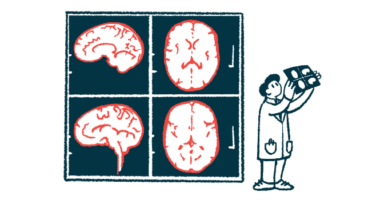#AANAM – US Pain Medication Use High for AIP with Neuropathy

Nearly 25% of people, mostly women, with acute intermittent porphyria (AIP) also have chronic nerve damage — a condition known as neuropathy — and use high amounts of pain medications, according to an analysis of a U.S. healthcare claims database.
Based on these findings, when diagnosing and treating AIP patients, physicians should also consider chronic neuropathy, the researchers noted.
Data from this analysis was recently featured in a poster, “Disease Burden and Healthcare Utilization Among Patients with Acute Intermittent Porphyria Experiencing Chronic Neuropathy: Analyses from a National Healthcare Database,” presented at the 2021 American Academy of Neurology (AAN) Virtual Annual Meeting, held online April 17–22.
Acute hepatic porphyria (AHP) refers to a family of metabolic diseases in which the toxic buildup of heme precursors in the body leads to sudden and severe attacks. Of note, heme is a molecule that helps transport oxygen throughout the body.
In AIP, the most common form of AHP, symptoms consist mainly of attacks of severe and steady abdominal pain that develop over several hours or a few days. Pain may also occur in the neck, lower back, buttocks, arms, and legs.
Single or repeated attacks can lead to chronic damage or malfunction of nerves found outside the central nervous system (comprising the brain and spinal cord), leading to the onset of a condition known as peripheral neuropathy. This can cause patients to experience numbness, tingling, and burning sensations, as well as muscle weakness.
In this study, researchers at the Cleveland Clinic, along with scientists from Alnylam Pharmaceuticals and other institutions, performed a database analysis to estimate the use of healthcare resources among AIP patients based on their attack rates, chronic symptoms, and co-existing illnesses (comorbidities).
All data was sourced from the IBM MarketScan Commercial Claims and Medicare Supplemental Databases. The team selected patients who had at least one claim for AIP between October 2015 and June 2018 to be included in the analyses.
A total of 225 AIP patients (69.8% female) with a mean age of 45.6 years were included in the study. Chronic neuropathy occurred in 56 participants (24.9%), most of whom were women (80.4%) with a mean age of 49.9 years.
The analysis revealed the mean annualized attack rate (AAR), or the mean number of porphyria attacks patients experienced within a year, was 2.2 in the overall population and 2.7 in those with chronic neuropathy.
While more than half (53.3%) of the patients in the overall population remained attack-free (AAR of zero), around a third (35.7%) of those with AIP who also had chronic neuropathy achieved the same outcome. In contrast, the percentage of patients who had an ARR of three or greater was much higher in those with chronic neuropathy compared to the overall population (30.4% vs. 16.0%).
Comorbidities were also more frequent in AIP patients with chronic neuropathy compared to the overall population. This was true for liver disease (17.9% vs. 12.4%), chronic kidney disease (14.3% vs. 9.3%), and high blood pressure (62.5% vs. 47.1%).
In AIP patients with chronic neuropathy, the mean annualized hospitalization rate was 1.0, with 57% of patients being hospitalized one or more times a year. The mean number of emergency room (ER) visits was 7.5, with 75% of patients visiting the ER at least once a year.
All patients had one or more outpatient visits, which totaled a mean of 19.9 visits per year.
“AIP patients experiencing chronic neuropathy had high utilization of opioid, non-opioid, and neuropathic pain medications,” the researchers wrote.
On average, a total of 24.2 opioid prescriptions were registered per year, with 82% of the patients having at least one opioid claim per year.
The mean annualized prescription rate for neuropathic pain therapies was 15.4, with 59% of the patients requiring one or more prescriptions per year. Claims for any pain medicine occurred at a mean annualized rate of 33.2, with practically all (91%) patients filling one or more of these claims per year.
“When diagnosing and managing patients with AIP, chronic neuropathy, both during and outside of the setting of an attack, should be considered,” the researchers wrote, adding that “additional analyses are planned to estimate healthcare resource utilization among various [AIP patient] segments.”






